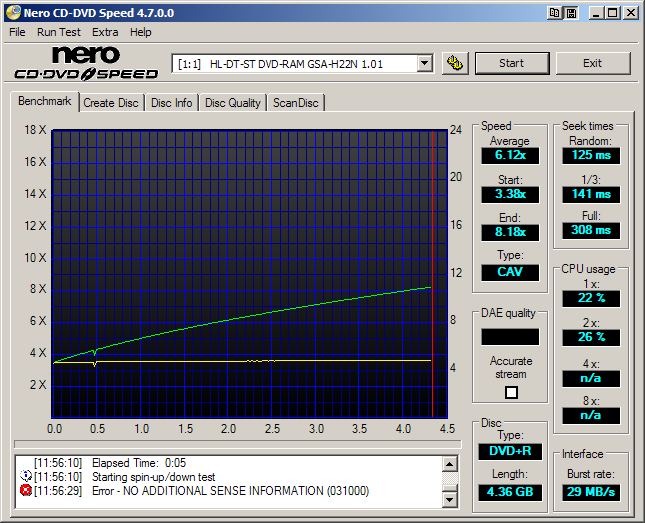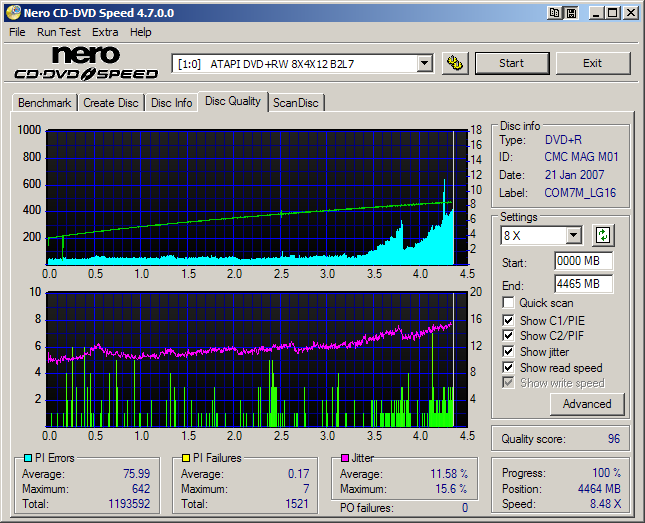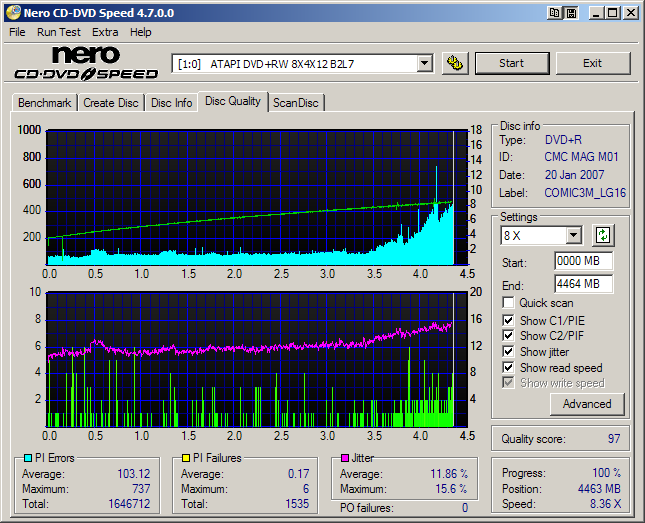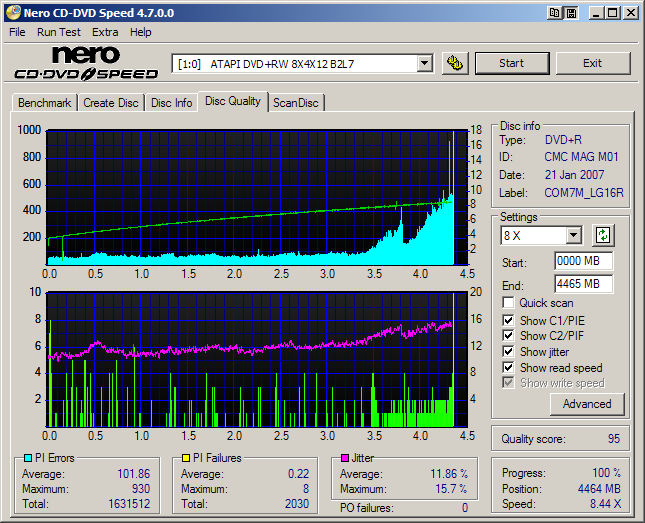 by 2Dogs on Sun Jan 21, 2007 6:28 pm
by 2Dogs on Sun Jan 21, 2007 6:28 pm
Hi n4rko,
your scan looks pretty similar to one I did with my LG with UDMA 2 - especially the burst rate, which shows as 20MB/s.
I'm still trying to figure out if running at UDMA 4 improves anything - and specifically writing quality. There doesn't seem to be much difference with the Memorex 16x DVD+R discs I've burned with, but I'm going to retest some RICOHJPN R03 media that my LG definitely didn't seem to like burning to with UDMA 2.
UDMA 4 is supposed to allow faster burst rates for one thing, and the transfer rate tests seem to confirm this - but like I said, I'm not sure if I'm seeing any great benefits from it. On the other hand, if my writing quality is not made worse, then there's at least no harm in it.
I'll assume you are running Windows XP, but it's similar for 2000. Excuse me if I'm teaching you to suck eggs with any of the following!
First off, you need to have a pc that can take advantage of the higher transfer rates, so an older motherboard might not support it. Secondly, you have to use 80 wire IDE cables to connect your drives. Most newer pc's would have these cables and would support UDMA 4 - so the easiest thing to do is first to check what you have in device manager, and click on "IDE/ATAPI controllers". If you have a pc, there will most likely be two controllers, but laptops commonly have just one. Right click on the "primary IDE channel" or "secondary IDE channel" and click on "properties". Then click on "Advanced Settings" and you will see the "Current Transfer Mode" for devices 0 and 1 on that channel. One of these will be your burner - typically on a pc the burner would be on the secondary channel, and if you only have one optical drive, it would be device 0.
Now if your pc does support UDMA 4 and you do have an 80 wire IDE cable connected to your burner, you can set it to UDMA 4 in bios. To do that, you'll have to hit one of the "F" keys when your pc is booting up. Which key it is will vary according to your pc, but on my HP, it's either the F10 key, which gives me a simplified menu of bios options, or the F11 key, which gives me more options.
Having identified where your burner is - say device 0 on the secondary IDE channel, you can set the DMA select mode in bios to "Auto". Then when you boot up, the LG should be picked up as a UDMA 4 device.
Whether or not that then gives you any real benefits, I'm not sure. I have noticed, however, that when I burn a disc with Nero 6, the "buffer state" seems to stay in the 87% to 94% range. Previously, running in UDMA 2 mode, the buffer state would fluctuate a lot more. It may or not have some effect on burning quality.
KHypermedia 8x4x12 (BenQ 800 clone) B2L7 BenQ DW1655 BCIB BenQ DW1650 BCIC Samsung SH-S182M KC03 LG GSA-H22N 1:01 TDB Lite-On SHM-165H6S HS0E Pioneer DVR-111D 1.29







